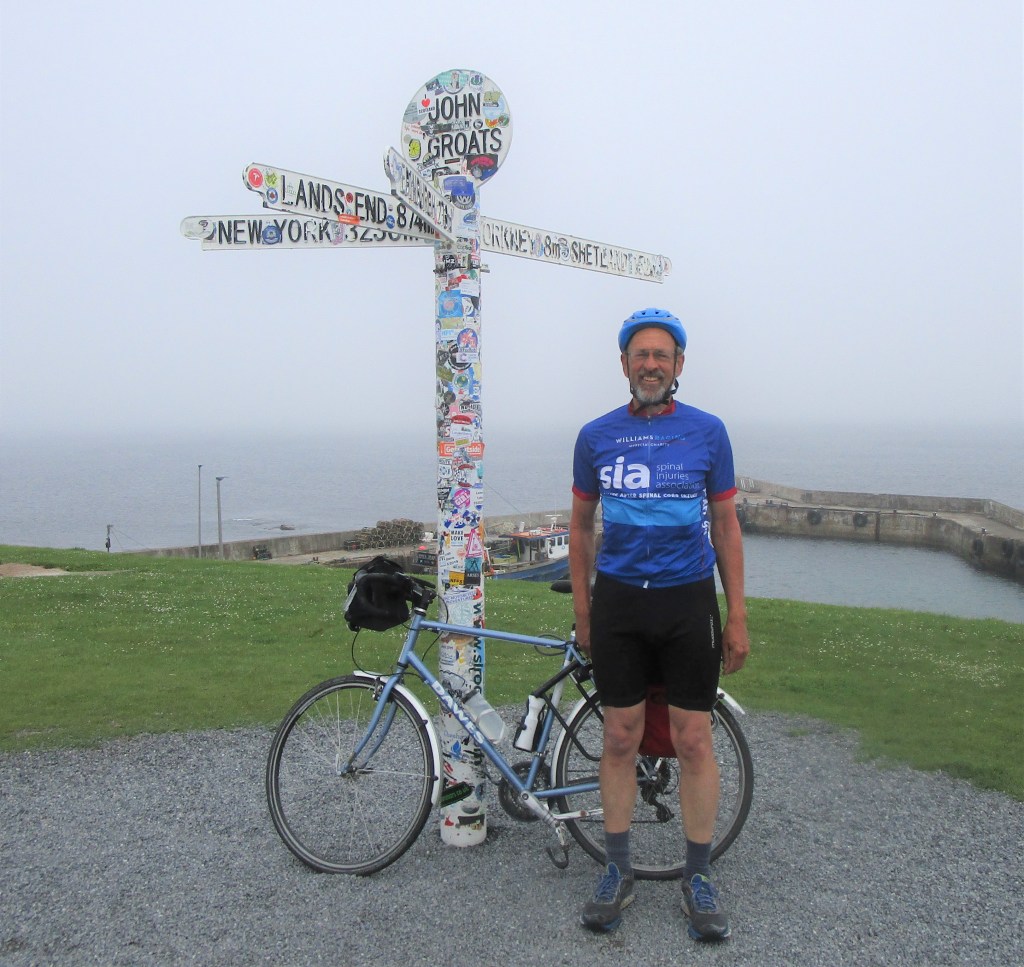
After a short ride in sea haar, I arrived at John O’Groats. In the same way as Land’s End, I am not quite sure why it has gained its popularity – all a bit tawdry – however the compulsory photo at the signpost was required – no professional photographers here and you’ll note the post is covered in stickers. John O’Groats harbour is rather fine though – geared for crustacean fishing in the extreme conditions of the Pentland Firth.

John O’Groats is named after a Dutchman, Jan de Groot (John the large!) who used to run the ferry service to Orkney from here. Jan would have needed to be large to handle the fast flowing Pentland Firth tidestreams just offshore here. I took the modern ferry across – spending the whole trip on deck watching seabirds. The fog was pretty bad, nevertheless there were many auks (mostly guillemots) in the southern part of the Firth. I was very pleased to spot my first black guillemot (or tysties) – and knew at that point that Burwick on South Ronaldsay must be close; tysties really only occur very coastally. Sure enough, Orkney came out of the mist a few second later.
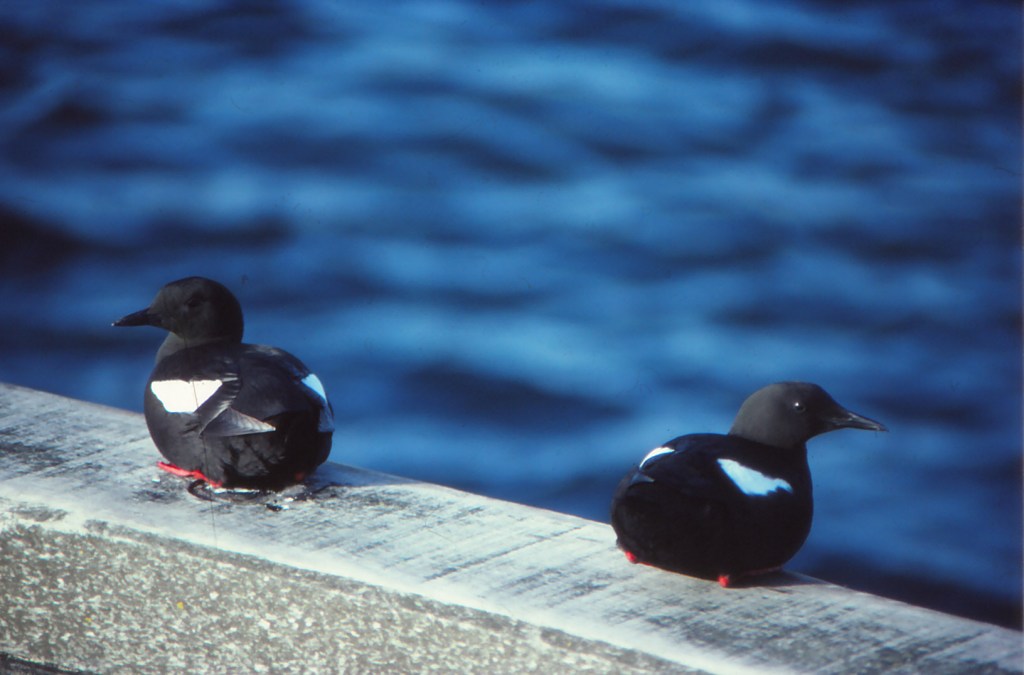

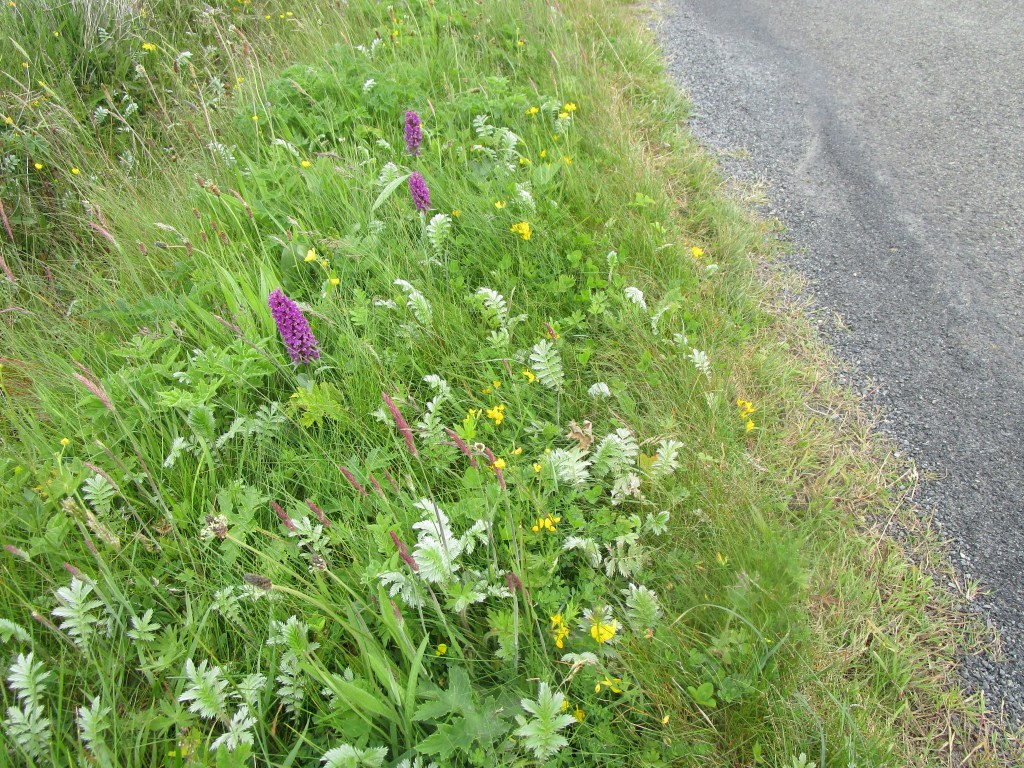

I came to Orkney in 1983 during a slight hiatus in the work on seabirds at sea. I got a small grant initially to count black guillemots around Orkney. My friend, Pete Ewins, working in Shetland had suggested that the most reliable time to count this well-dispersed species was early morning during April. At this time the adults gather to display on or on the water just off their breeding sites. I took my bike (an earlier Dawes) and tent, along with the Seabirds at Sea Team inflatable boat and went to Orkney. Coastal sections of Mainland were counted by walking (often running) before about 0900, after which I would return to the tent, strike camp and cycle to the next section to be counted. If I could find a volunteer, we would take the inflatable and either count a longer section of coast, or visit an offshore island.



It soon became pretty obvious that the nesting grounds of black guillemots were controlled by the presence or absence of rats. They would only nest where rats could not get to them. They also would not nest where other auks were nesting. This left them offshore islets, cliffs above c10 m high and certain man-made structures such as harbour jetties. Finding these charming birds in numbers considerably above those previously thought to occur, during idyllic early morning April conditions, still remains one of my favourite surveys.
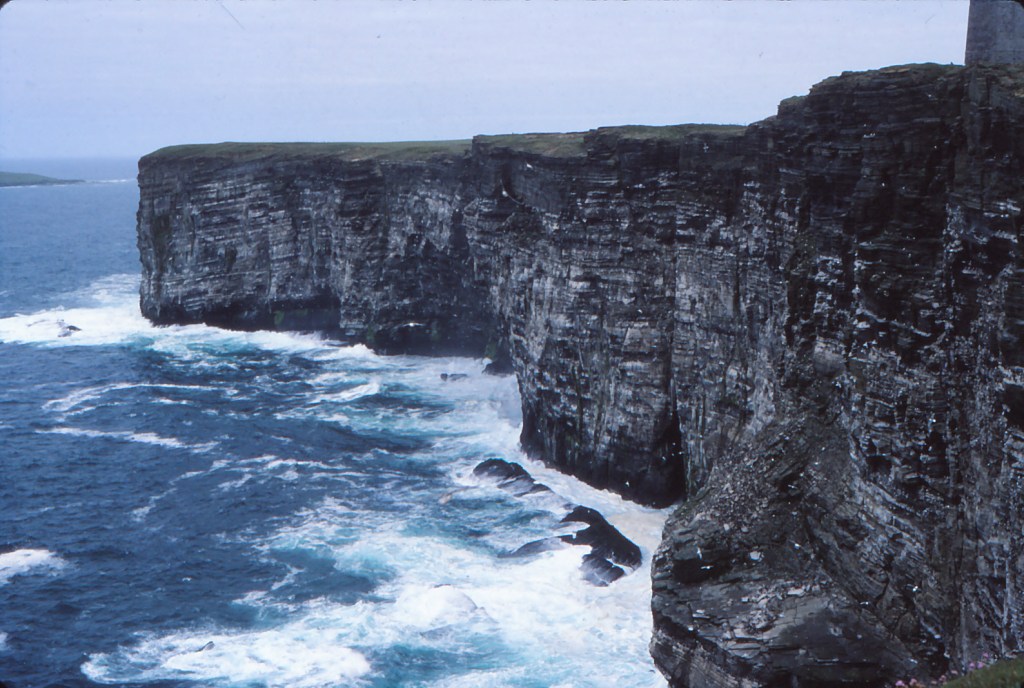

Later in summer 1983, I returned to Orkney to carry out what was then an annual monitoring programme of cliff-nesting seabirds. This had been established following concerns about the impact of the North Sea oil developments on seabirds. As it turned out, these concerns proved reasonably unfounded and the monitoring programme, both here and UK wide, has instead proven to be a good way of monitoring the changes in seabird populations linked to food supply, and in turn with ocean and climate change. My job in 1983 was though to visit each of five colonies ten times in the first three weeks of June. and to count pre-defined plots. There were daily time limits on this (to try to avoid known diurnal rhythms) so I would drive and hike hectically about to get the job done. One of the main colonies visited was Marwick Head, with some iconic views that contained the monitoring plots (there are at least seven plots in the main picture above).

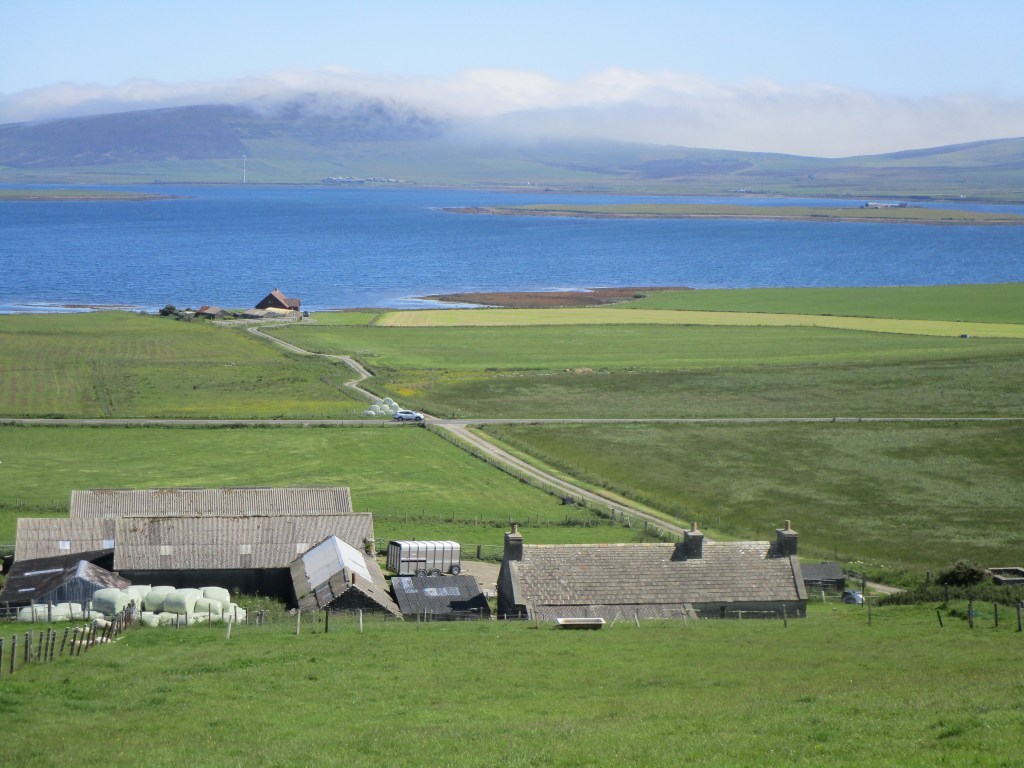

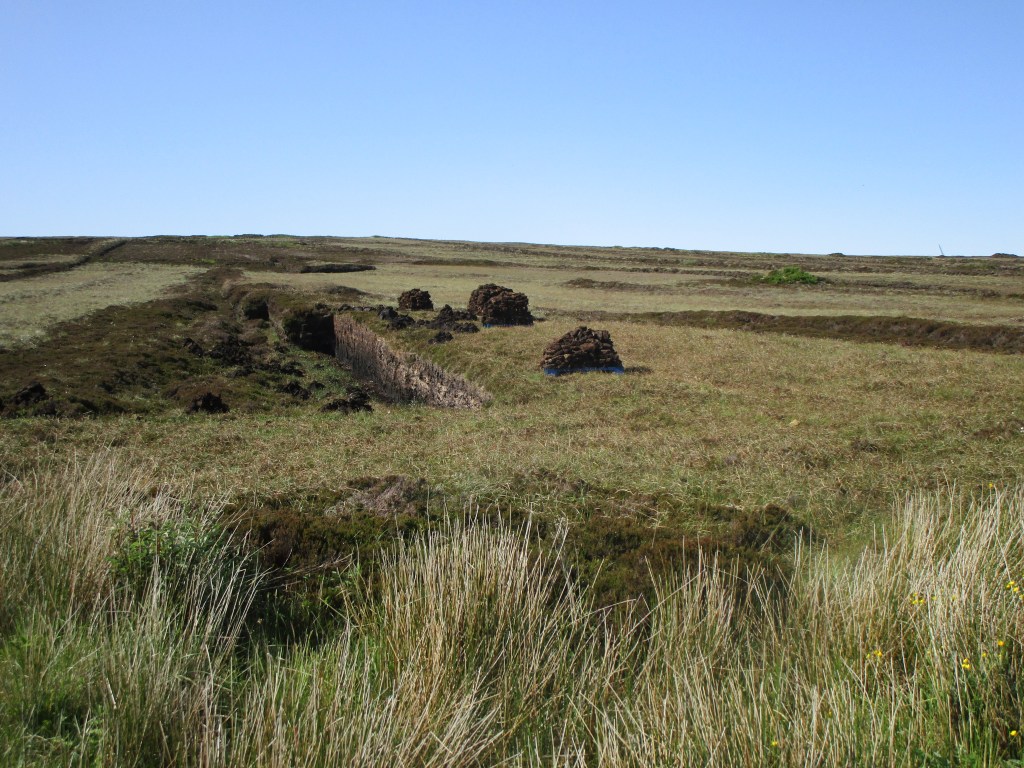
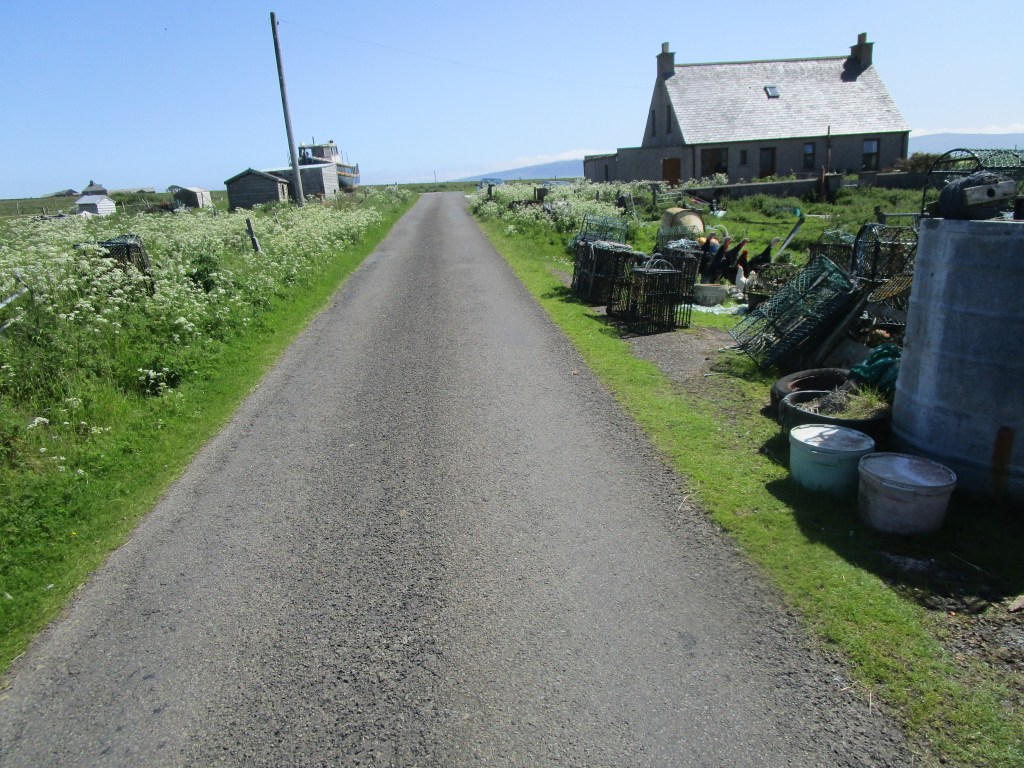
In 1983, I stayed in a static caravan in the village of Evie in north Mainland. An inspection of Google Earth revealed the caravan was no longer there, and I discovered during my visit that it had blown away during a winter storm some years ago. This did not surprise me – it was fairly rickety during gales when I was there. I had though to visit the site of the caravan to complete my mission.
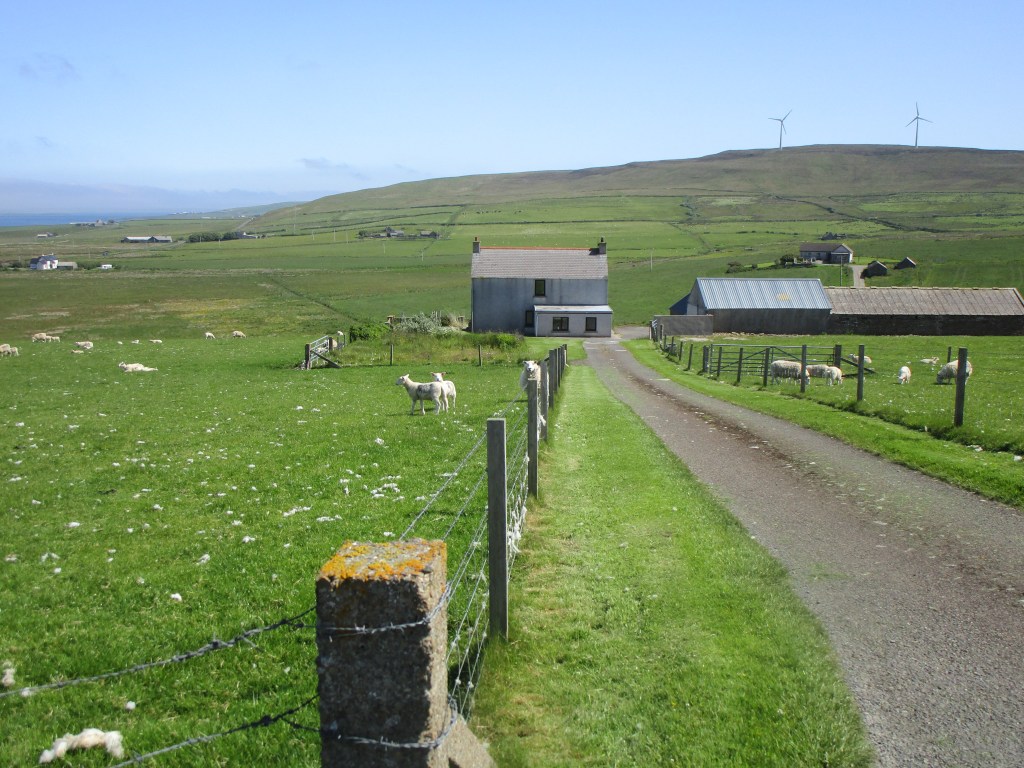
My friend Liz was kind enough to agree to come a photograph me finishing my mission. I had knocked on the farmhouse door to see if it would be ok to take a few pictures, but no-one was in. I wanted a few pictures taken, and we took so long that the farmer, who lives on the other side of the valley had her suspicions raised and came to see what was happening. We had a good chat and update. Needless-to-say for the small community of Orkney, she and Liz knew many people in common. After that it was a short ride, and latterly a lift, back to Liz’s for a most welcome shower, beer and barbeque.
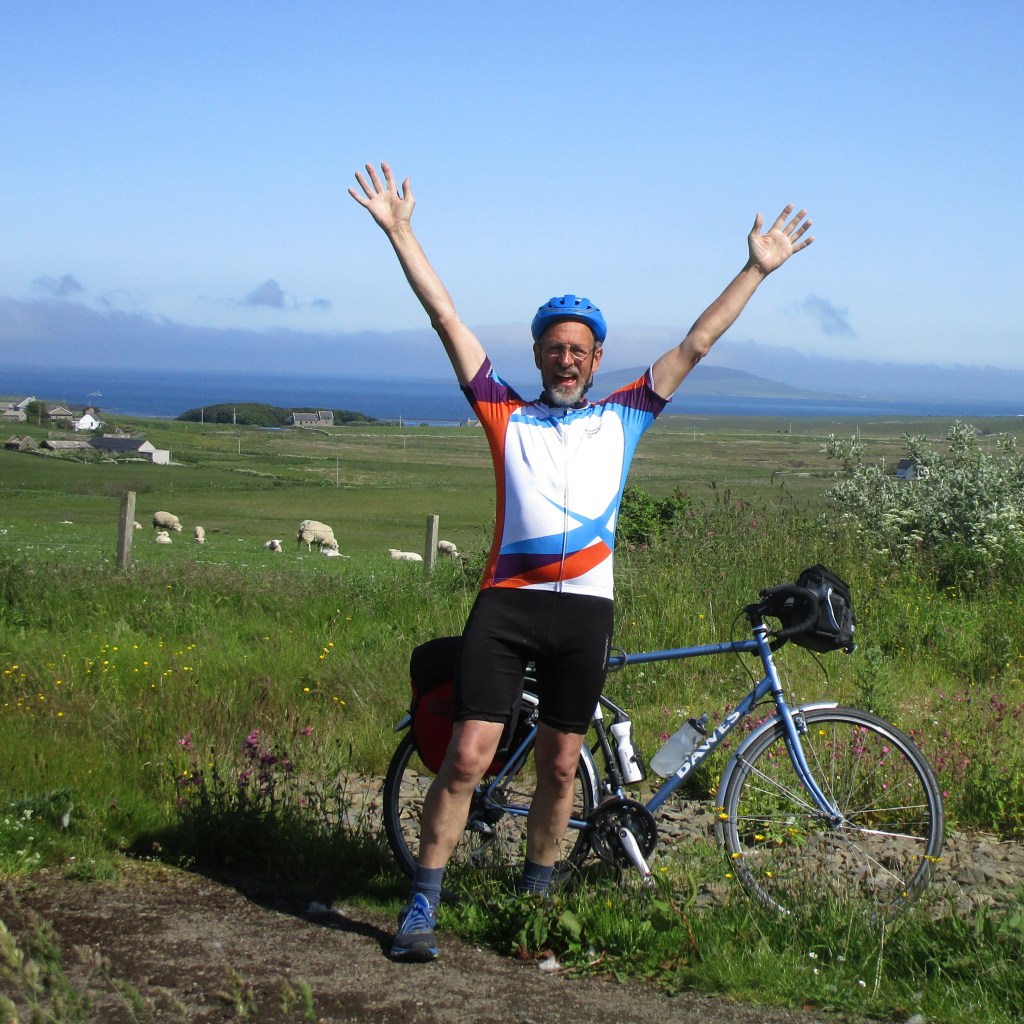
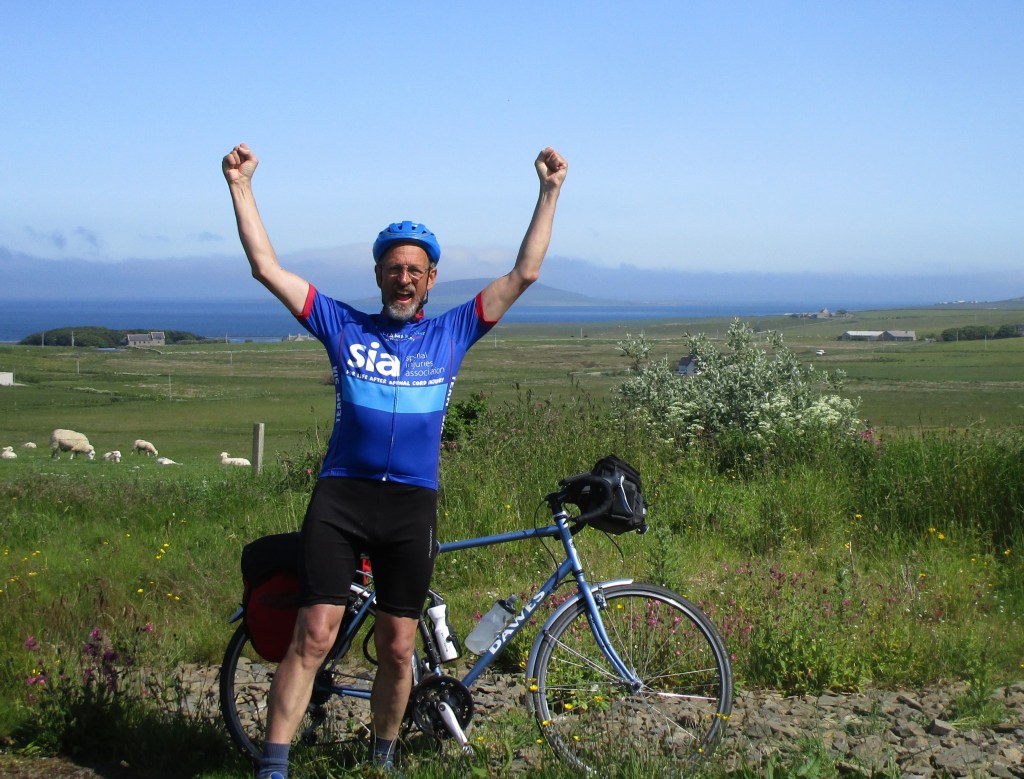

Many congratulations Mark. You seem to have been cycling for ages. Seems weeks ago that you were eating cream tea in Charmouth! So many places to have lived and so many people to visit. All the photographs both new and old brought the trip to life for all of us who have enjoyed your daily postings. I don’t know if you remember the McAdoos friend Elmer Storey, he lived on a boat in the estuary in Currabinny for many years then eventually settled in Orkney, in the old school house in Kirkwall. Peg and I visited him A few years ago, it is such a lovely place. Perfect to end your trip. Hope you have raised lots of money and now deserve a good rest. Anne x
LikeLike
Thanks Anne, yes I remember Elmer but never bumped into him on Orkney. The rest might have to wait a bit, quite a lot of tidying up needed – but not so much bicycling for a while! xxx
LikeLike
Absolutely fantastic, Mark, very well done, and in what seems to me like an amazingly short time (though probably not to you!)
Your daily updates have been so interesting, I have learnt a lot, so good to hear about someone who has followed his passion in life and got so much enjoyment from it.
LikeLike
St. Magnus Community Cafe was the place you ate? Was it any good?
Love your definitions of people who live on Orkney & Shetland. I’ve had so much fun with your trip, Mark. Thanks for making a blog.
hope to see you next time we’re over there.
~ pat
Patricia Baird, Ph.D. Vancouver, BC, Canada Fax 604-689-1051
http://www.kahiltna.org
LikeLike
Hi Pat, thanks for your comments – yes, that I where I ate and it was fine. I am working on a blog as you suggested on places to stay/eat. To be honest, I did not find anywhere bad, some could be improved, and of course I did not do any local comparisons
LikeLike
Congratulations on completing your epic journey. I feel very proud of you. Come and see me soon. Much love. Mumxx
LikeLike